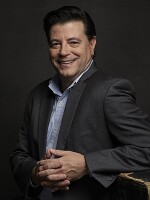Several studies reveal that millennials are not attending live arts performances at the same rate as other age groups. This does not bode well for the future of arts organizations, which have to rely more and more on the patronage of an increasingly aging audience to make ends meet.
According to arts advocacy group The Wallace Foundation, who has looked into this issue extensively, 18 to 34 year olds, so called “millenials,” are attending performing arts events at much lower levels than their age group used to, with big drops in live theater and jazz performances. And there is no indication that as they get older, they will start attending performances, like generations before them have done.
“There seemed to be a perception among leaders of cultural institutions that millennials would just age into caring about arts and culture,” said Colleen Dilenschneider, a data analyst specializing in behavioral economics and cultural institutions. She's also a millennial. “We're seeing that millennials actually are not just simply aging into caring about arts and culture.”
The reasons why they are shying away from live performances are both practical and philosophical. The Wallace Foundation found things like high ticket prices, not having someone to go with, or being busy with other things as the top barriers to millennials attending a concert or play. But Dilenschneider says it goes deeper than that, and arts organizations need to understand the values of this generation if they want to bring them in.
“We are a big generation on shared experiences, and doing things that are unique, and cool, and special, and relevant are important to members of this generation,” said Dilenschneider. The Wallace Foundation found that millenials prefer places and events that have a good vibe, are buzzworthy, and where other millenials are also gathered.

The arts industry is paying attention. With their audiences getting older and older, they can little afford to ignore this generation and their particular preferences.
“You have to go at it every way you can. It's something you just gotta keep plugging away at,” said Cathy Malloy, first lady of Connecticut and the executive director of The Greater Hartford Arts Council, which supports arts organizations in the region. “And listening to them, I think a lot of the organizations have been very, very smart lately, bringing millennials into the conversation.”
One organization that has reached out in a significant way to millennial audiences is Hartford Stage.
“We realized a few years ago that there was this generation in Hartford that was not coming. There are an awful lot of young people in downtown Hartford,” said Michael Stotts, managing director of Hartford Stage. “With the new apartments that have come online and the number of people that have moved in, that we needed to be doing something to attract that audience.”
Stotts says his organization looked at the research, and came up with a way to check off several millennial boxes at once. It's called the StagePass.
“It's quite simply a $99 flex pass, it can be used for any performance, best seating that is available. You can use it multiple times if you happen to love a show,” said Stotts. “There are social components, we will have StagePass nights at the theater, where there will be either a pre-show conversation, it could be a post-show cocktail hour, it could be something interacting with artists.”
Plus, StagePass subscribers can bring up to two friends to any show at a discounted rate. StagePass has about 200 millennial subscribers, and Stotts hope to double that in the coming seasons. Hartford Stage has also asked a handful of StagePass subscribers to participate in StageOne. Stotts describes it as a junior board of directors to help the company find ways to bring even more young people into the fold.
Hartford Stage isn't the only organization in Hartford going to great lengths to court the millennial patron. The Hartford Symphony has a discounted flex card ticket program, and has introduced multimedia concerts and pre-show discussions aimed at giving millennials experiences they can enjoy and tell their friends about.
Dilenschneider said there is good news for arts organizations that make the efforts to attract millenial patrons.
“Millennials that visit, are more likely to come back, and even more importantly than that on some levels, they are more likely to endorse the organization,” said Dilenschneider. “And this makes sense because millennials are a super connected generation. Millennials more than make up the investment that it takes to cultivate them.”
Editor’s Note: Hartford Stage and The Greater Hartford Arts Council are underwriters on Connecticut Public.





